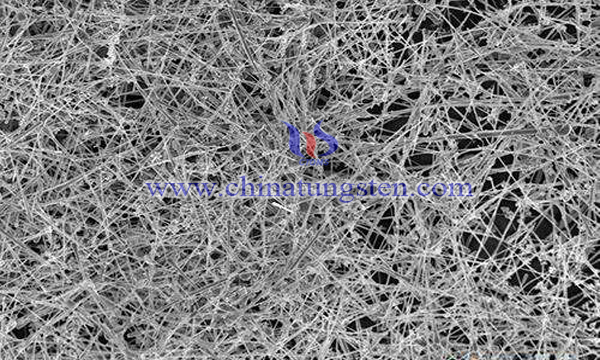Tungsten Sulfide Nanosheet/Titanium Dioxide Nanoribbon Composite
- Details
- Category: Tungsten Information
- Published on Sunday, 09 December 2018 18:13
In the solar spectrum distribution, ultraviolet light accounts for 5% of the total solar energy. Among them, titanium dioxide is the most typical ultraviolet photocatalyst, but its light absorption is limited to the ultraviolet region. Visible light energy accounts for 48% of the solar spectrum. Bismuth tungstate, bismuth molybdate and other visible photocatalysts have also been widely studied.

One-dimensional titanium dioxide nanoribbons have become a research hotspot due to the surface can be loaded with metals and oxides. However, expanding the spectral range of photocatalytic response of titanium dioxide nanoribbons from ultraviolet to visible, even near infrared, has become a problem to be solved to enhance the photocatalytic effect of titanium dioxide nanoribbons.
In order to solve the problem that titanium dioxide photocatalyst can only absorb ultraviolet light in the existing technology, some researchers designed a preparation method of tungsten sulfide nanosheet/titanium dioxide nanoribbon composite. The main contents of the method are as follows:
Firstly, 0.5 mole of tungsten chloride solution was measured and 5 mole of titanium dioxide nanoribbon was weighed. Tungsten chloride solution and titanium dioxide nanoribbon were added to deionized water and fully dissolved to prepare the first mixture. Then take 2.5 moles of thioacetamide solution, add thioacetamide solution to the first mixing solution, and then add the first mixing solution with thioacetamide solution through magnetic stirring drop for 2 hours to prepare the second mixing solution. The second mixture was then placed in a hydrothermal reactor and reacted at 250 ℃ for 48 hours to prepare the third mixture. Then the precipitate was filtered from the third mixture and washed with deionized water. Then the precipitate was vacuum dried for 12 hours at 70 ℃. Finally, the tungsten sulfide nanosheet/titanium dioxide nanoribbon composites were obtained.
The width of tungsten sulfide nanosheets grown in liquid phase on titanium dioxide nanoribbons is 100-200 nm. Compared with single structure tungsten sulfide nanosheets and titanium dioxide nanoribbons, tungsten sulfide nanosheets/titanium dioxide nanoribbon composites have higher photocurrent activity on methyl orange under ultraviolet, visible and near infrared light. The efficiency of photocatalysis is excellent, and it can effectively promote the separation of photogenerated electron holes, thus broadening the use of sunlight.
- Tungsten Oxide Manufacturer & Supplier, Chinatungsten Online: www.tungsten-oxide.com
- Tungsten News & Prices of China Tungsten Industry Association: www.ctia.com.cn
- Molybdenum News & Price: news.molybdenum.com.cn
- Tel.: 86 592 5129696; Fax: 86 592 5129797; Email: sales@chinatungsten.com



 sales@chinatungsten.com
sales@chinatungsten.com